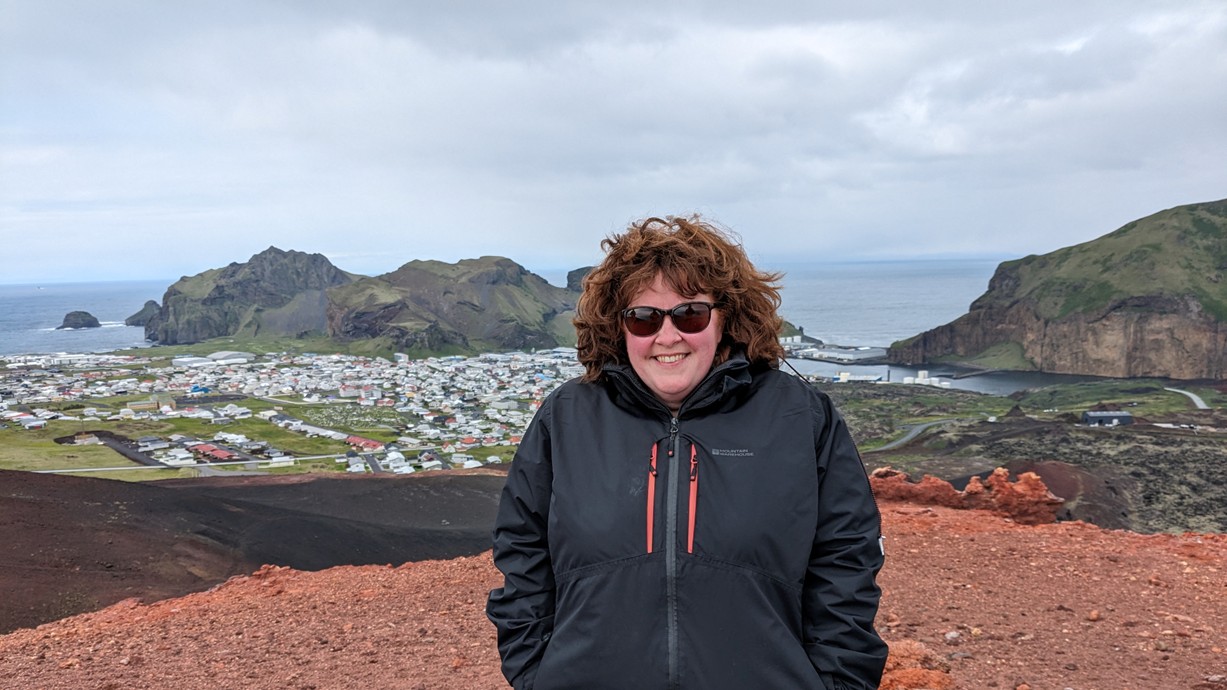
Dr Rhian Hedd Meara travelled to the Icelandic island of Heimaey to film Isle of Fire.
Swansea University has helped launch an award-winning educational video series that brings Icelandic eruptions into school classrooms, offering students a deeper understanding of volcanic forecasting and hazard management.
“Isle of Fire | Lessons in Volcanic Hazard Management from Heimaey to Grindavik” brings together leading volcano experts and Icelandic communities in a groundbreaking project.
Developed by Time for Geography, the series provides an unprecedented 50-year perspective of one of the most important eruptions in the history of volcanic hazard management: the 1973 eruption on the island of Heimaey in southwest Iceland.
Isle of Fire is based on four years of published academic research by Swansea University’s Dr Rhian Meara.
Series co-author and presenter Dr Meara, senior lecturer in Geography, said: “Swansea University’s involvement in Isle of Fire highlights our commitment to pioneering research that has real-world impact.
“It has been a privilege to work with a brilliant team of experts and the local community to bring this extraordinary case study to life for future geographers.”
Alongside Dr Meara, the project features insights from a number of other leading experts, including co-presenters Professor Janine Kavanagh (University of Liverpool), Dr Marc Reichow (University of Leicester), and Dr Jane Boygle and Dr Iestyn Barr (Manchester Metropolitan University).
Together, they demonstrate cutting-edge techniques in eruption reconstruction and forecasting, as well as modern management strategies; more important than ever, given current volcanic activity on the Reykjanes peninsula, which is threatening major population centres for the first time since 1973.
Series producer and presenter Dr Rob Parker, director of Time for Geography, said: “The key to this project was the invaluable contributions of a unique collaboration of leading volcanologists and hazards experts, as well as those who were there at the time, experiencing, filming and photographing the eruption. This enabled us to bring the events and their scientific significance to life on screen, with previously untold stories, never-before-seen footage and new insights.”
Isle of Fire has earned national recognition, winning three prestigious awards for its impact on geography education:
- Geographical Association 2025 Silver Publishers Award – Recognising the series’ exceptional quality in advancing Geography education.
- Geographical Association 2025 Highly Commended Publishers Award – Honouring the virtual student conference inspired by the series, which has contributed to geographical education and professional development.
- Scottish Association of Geography Teachers 2024 Resource Award – Celebrating Time for Geography’s impact on Geography education in Scotland, with Isle of Fire recognised as the platform’s flagship project of 2024.
This open-access, feature-length series has been made possible thanks to the fantastic support of Time for Geography’s community of partners, with special acknowledgement to education travel partner Rayburn Tours, who led an intensive filming campaign capturing the physical and human geography of the Vestmannaeyjar archipelago, rich in volcanic processes and landforms.
Dr Meara said: “We would like to thank the community of Vestmannaeyjabær for their fantastic support and valuable contributions to this project. It has been a privilege to help bring Heimaey’s story to life for a new generation in school classrooms.”
Explore how volcanic hazard management has evolved from Heimaey to Grindavik—watch Isle of Fire.
